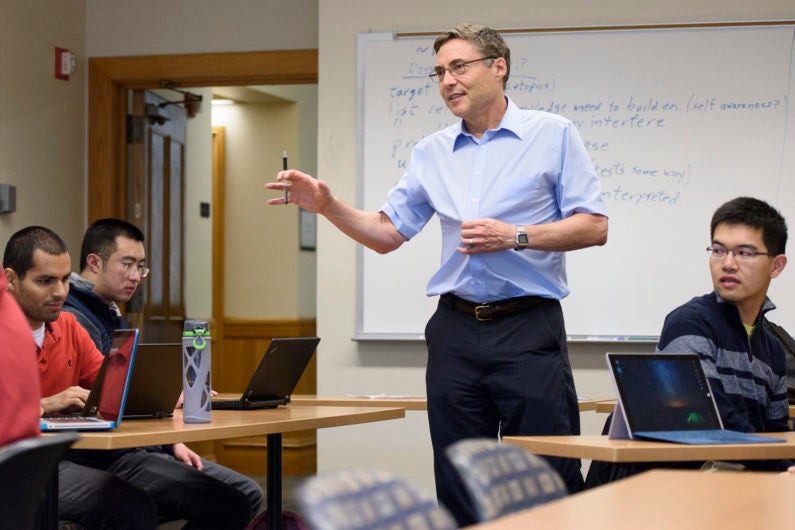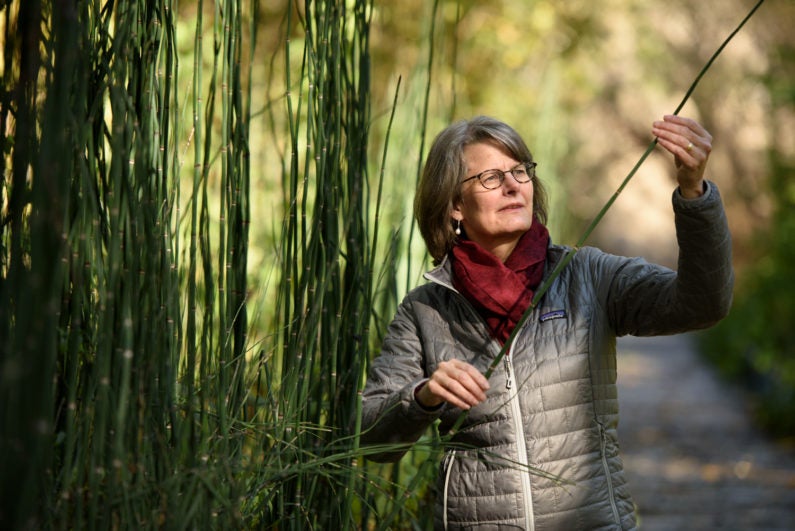Stanford professors will use a $1 million grant to change the way undergraduate scientists learn
Carl Wieman and Elizabeth Hadly are two of this year’s HHMI Professors, each proposing new ways of improving undergraduate STEM education.
Stanford professors Elizabeth Hadly and Carl Wieman have been selected as two of this year’s Howard Hughes Medical Institute Professors. Each will receive a grant of $1 million over the next five years to promote their innovations in undergraduate science education.
Wieman, a professor of physics and education, hopes to create a new generation of adaptable professional scientists, engineers and doctors who are better prepared to solve novel problems in their workplaces rather than being limited to acing rote tests in the classroom. His grant will support efforts across at least five different Stanford schools to develop assessments and tools that will help students learn to take new situations in stride.
Hadly, a professor of biology, wants to change the Stanford undergraduate experience by sending more students abroad to experience field work in small groups. She hopes to arm them with the skills they will need to tackle the unbounded problems of global environmental change by fostering the understanding and interdependence created by travel and exploration.
Both have created cross-disciplinary plans that move undergraduate scientists out of lectures and encourage them to develop skills to solve real-world problems.
Assessing learning, not knowledge
In partnership with up to five other Stanford schools, Wieman – who himself is a professor of both physics and education – wants to create a new way of assessing whether classes are preparing students to think innovatively.

Physics Professor Carl Wieman plans to use his grant to help students learn adaptability as they face novel situations. (Image credit: L.A. Cicero)
Thriving in the workplace is not about knowing a lot of facts, he said. Beyond fundamentals, the specifics aren’t as important because they are usually taught on the job. But across disciplines, what matters is how workers respond to problems that are a departure from their everyday procedure.
“In medicine, having the skill to recognize that the hundredth case has an important anomaly and is not just a slight variation on the other 99 cases: that can be the difference between saving people or having them die,” said Wieman, who is also DRC Professor in the School of Engineering.
In a similar vein, “nuclear power plant disasters are wonderful examples of people blindly following procedures without recognizing where those procedures aren’t applying anymore, and overlooking critical factors,” Wieman said.
Working closely with Dan Schwartz, dean of the Graduate School of Education, Wieman will work to create new kinds to tests that determine how well Stanford students across a variety of fields can respond to new situations and new problems, and then explore ways to teach these adaptive skills more effectively.
“No instruction can prepare people for every situation they’re going to encounter,” Schwartz said. “What kind of instruction can prepare them to continue learning once they leave the classroom?”
Traditional lecture-style teaching is unlikely to be the solution, Wieman and others have said in the past. With the HHMI grant, he and Schwartz intend to measure and improve how well Stanford graduates are prepared to face new and unexpected challenges in their fields.
Immersing students in the field
Hadly, a professor of environmental biology, also wants to reshape the undergraduate learning experience at Stanford. To her, the best way to push students to think broadly and across disciplines is to encourage small groups of students to experience field work together: to give them “extraordinary experiences in extraordinary places,” as she put it.

Elizabeth Hadly, professor of environmental biology, wants to expand her students’ study-abroad opportunities to include field stations in developing nations. (Image credit: L.A. Cicero)
“Only about 60 percent of our students go abroad, and most of the students who go abroad go to one of our study abroad programs. Although there are exceptions, they tend to be in European countries very similar to our own,” said Hadly, who is also Paul S. and Billie Achilles Professor in Environmental Biology. She intends to expand her students’ study-abroad opportunities to include small groups at field stations in countries not currently offered as Stanford programs. So far, she has teamed up with locations in India, Mexico, Brazil and several countries in Africa.
“We hope to eventually get them more immersed in another culture, where we don’t just provide information to that culture, but the culture provides information to us,” she said.
Hadly noted that these kinds of field experiences are often prohibitively expensive to students from less privileged backgrounds. The HHMI grant will help many of those students travel abroad.
Hadly’s program approaches diversity from many different angles: in the students going abroad, in the locations and communities where they will be embedded, and across disciplines of sciences and humanities. “We have a world that’s changing faster than our traditional way of training students through singular disciplines,” she said. She hopes to begin with students’ first year at Stanford, teaching a course that urges students to collaborate across the humanities, social sciences and STEM.
“My overarching goal for the whole student body,” Hadly said, “is that they’ll understand and appreciate, in a deep way, why a diversity of topics, people, thought leaders, cultures, and skill sets are basically the way that we have to approach the future of the planet.”
Hadly is also a Senior Fellow at the Stanford Woods Institute for the Environment and a member of Stanford Bio-X.
